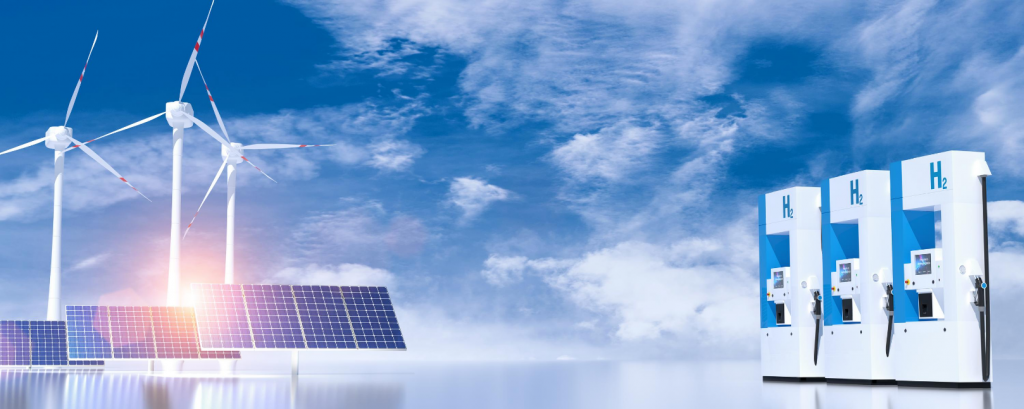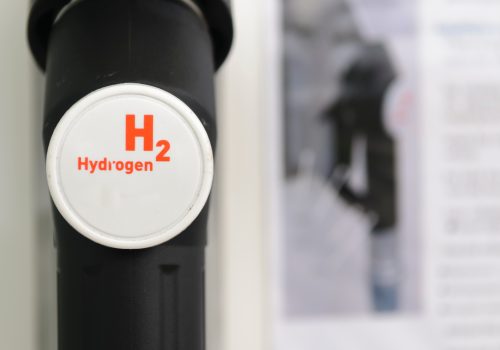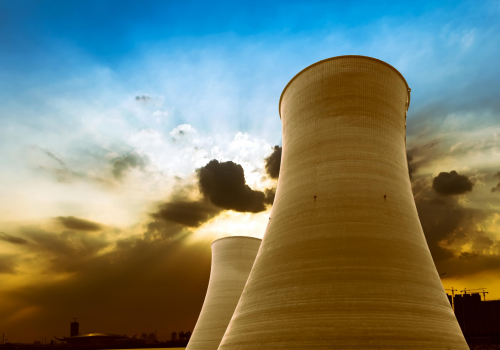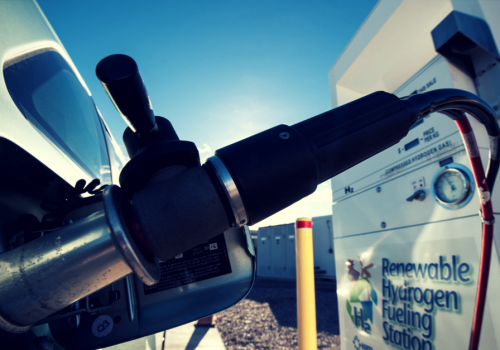In early July 2020, the city of Neom and ACWA Power of Saudi Arabia signed a joint venture agreement with Air Products of the United States to build the largest green hydrogen and green ammonia plant in the world. As the energy transition gains speed, this announcement is a significant step forward in establishing a new role for Middle Eastern oil-exporting countries in a future global economy less dependent on hydrocarbons. That said, the scale and relative inexperience of key project partners means the project still faces an uphill battle.
Neom is the new city planned by Saudi Arabia’s Crown Prince, Mohamed bin Salman (MbS), and it has been touted as the city of the future, managed by robots, entirely ‘green,’ and a haven of high-tech industries. This city of the future is meant to propel Saudi Arabia into a carbon-free future. ACWA is a finance and engineering company that develops and owns power plants and water desalination facilities worldwide. ACWA is owned by a number of Saudi private sector companies and also by the Saudi state, which has now taken a major interest in the company through its Public Investment Fund (PIF). PIF is also expected to be the main funder of Neom, which is expected to cost roughly $500 billion. For its part, Air Products is a leading producer of industrial gases, such as oxygen, hydrogen, nitrogen and argon. Indeed, it is a large multinational firm providing energy products and technology worldwide.
The announcement of the joint venture is both important and intriguing. It is important because it is the first time that Saudi Arabia is seeking to make a significant commercial-scale contribution to green energy, moving away from its signature low-cost oil and downstream products. It is also a sign of a new direction for Neom, as it moves away from being conceived as a city of robots and other grandiose ideas to being reimagined as a feasible project with serious developments. Furthermore, the joint venture is important because green hydrogen has been widely presented as the holy grail of decarbonization, taking on a central role in research as the new carbon-free fuel. Admittedly, hydrogen faces a steep cost curve to reach commercial scale. Because of this, investment in green hydrogen have remained relatively small. For investors, green hydrogen is still part of a long-term hedging strategy for a potential distant future when hydrogen becomes a dominant fuel source in the energy complex, displacing other fuels like crude and natural gas.
Until ACWA’s announcement, the broader Middle East had largely stayed out of the clean hydrogen race, with the region holding the lowest level of planned green hydrogen capacity of any major region. In this regard, the announcement could mark the beginning of a broader regional race to make the Gulf a cornerstone of the global green hydrogen market. While that is undoubtedly a ways off, the Gulf already produces and consumes hydrogen at a large scale, mainly in the production of fertilizers and some specialty chemicals. While this form of hydrogen is ‘grey’ hydrogen because it is produced using hydrocarbons, the Gulf’s record-low renewable power costs and abundance of land—two critical components for industrial scale green hydrogen production—could allow for industrial-scale production of green hydrogen. Furthermore, by using the green hydrogen to make easily transportable green ammonia at a competitive cost, the project will encourage the development of fuel cells and direct ammonia burning worldwide.
This new approach to energy production may signify a shift in energy policy by Saudi Arabia. While the Kingdom will continue to lean heavily on carbon-based exports, it is signaling how seriously it takes new fuel development by making such a large investment in commercial-scale hydrogen production
ACWA has been involved in developing electricity and water desalination since 2004, and it is now bidding on numerous projects, most of which involve solar and wind farms. It has built coal-based plants, solar power plants, wind turbines, and gas plants for both desalination and electricity generation. It owns directly or in part a total stable of plants producing nearly 6 million cubic meters per day of water desalination capacity and over 34 GW of power generation capacity. Fifteen percent of its energy production is through renewable energy projects, either solar or wind. The hydrogen plant in Neom would make ACWA one of the lead producers of green hydrogen and ammonia worldwide and one of the most important firms in Saudi Arabia, second only to Saudi Aramco. It could make the Kingdom a lead producer of green ammonia, which can revolutionize the transportation systems by being the feedstock to charging stations, or even be burned directly by ships and other large industrial engines.
There are, however, some questions unanswered in the announcement. First, to ensure that the hydrogen and ammonia plants get started, the three joint venture (JV) partners will have to be satisfied that the electricity is available. It is not yet clear who will produce the green electricity required for the electrolysis of the sea water and the energy intensive process of making ammonia from the green hydrogen. ACWA and its partners estimate it will require 4 GW of renewable power. This is an enormous amount, which is not only far more than what ACWA has ever done but more than double the largest single-site solar power plant in the world and more than three times larger than the largest solar plant in the region. To be sure, this does not make the feat impossible—one can trust that ACWA could design and develop this large-scale project—but it will be a massive undertaking. The challenges posed by the sheer size of the proposed project are daunting and not helped by the opacity of the project partners. For this project to act as a catalyst for broader green hydrogen development in the Kingdom, it will need to demonstrate on-budget, on-time production, and in a transparent process, none of which seem likely at this stage.
The second intriguing question is the financing. If ACWA is to be involved in the building of these facilities, it may be required to invest in numerous supplier firms worldwide, or it may need firms to invest in them. ACWA publishes a great deal of information on the type of projects it has done and on those that are in advanced development. However, it is extremely parsimonious and opaque in the amount of financial information it provides on its activities and about its financial structure. Yet, to raise substantial sums, it would have to be as transparent as any other large industrial borrower while the very opacity of ACWA may lead some analysts to question its financial strength.
In fact, it is difficult to know from ACWA’s “Annual Report” what the company’s actual assets are. It seems that many of ACWA Power’s projects are undertaken as venture partners. Without enough information, it is difficult to figure whether ACWA is an engineering firm that designs and builds power and water facilities, like Siemens or General Electric, if it is merely a financial partner in projects worldwide, or both. Mainly, it is difficult to evaluate whether ACWA is properly capitalized or whether it highly leverages its minority and/or controlling shares of projects.
Nevertheless, the financial markets are likely to appreciate PIF’s taking 44 percent equity in the company. PIF is known to be a $350 billion sovereign wealth fund. However, PIF also is notoriously opaque. The hydrogen/ammonia plant will cost $5 billion, while the wind and solar plant associated with the project may be around three to four billion dollars. Thus, without extensive disclosures and published audited statements, neither ACWA Power nor PIF will find it possible to raise substantial sums from the world’s financial markets. Alternatively, as it has done in the recent past, PIF could merely ask MbS, who is chairman of PIF as well as Crown Prince, to just draw on the Saudi Monetary Authority’s foreign cash reserves.
Assuming, however, that the financing and construction portions of the project can be completed on time and on budget, it will make Saudi Arabia an important player in the renewable energy field worldwide. In fact, it could start making the Kingdom as dominant in the green hydrogen and green ammonia industry as they are today in hydrocarbons.
Jean-François Seznec is non-resident senior fellow at the Atlantic Council Global Energy Center.
Samer J. Mosis leads S&P Global Platts Analytics Europe, Middle East and Africa LNG team. The views, thoughts, and opinions expressed in the text belong solely to the author, and do not necessarily represent the views of the author’s employer.
Related EnergySource content

The Global Energy Center develops and promotes pragmatic and nonpartisan policy solutions designed to advance global energy security, enhance economic opportunity, and accelerate pathways to net-zero emissions.
Image: Green hydrogen fueling station powered by solar and wind (audioundwerbung/Getty Images/Canva)



